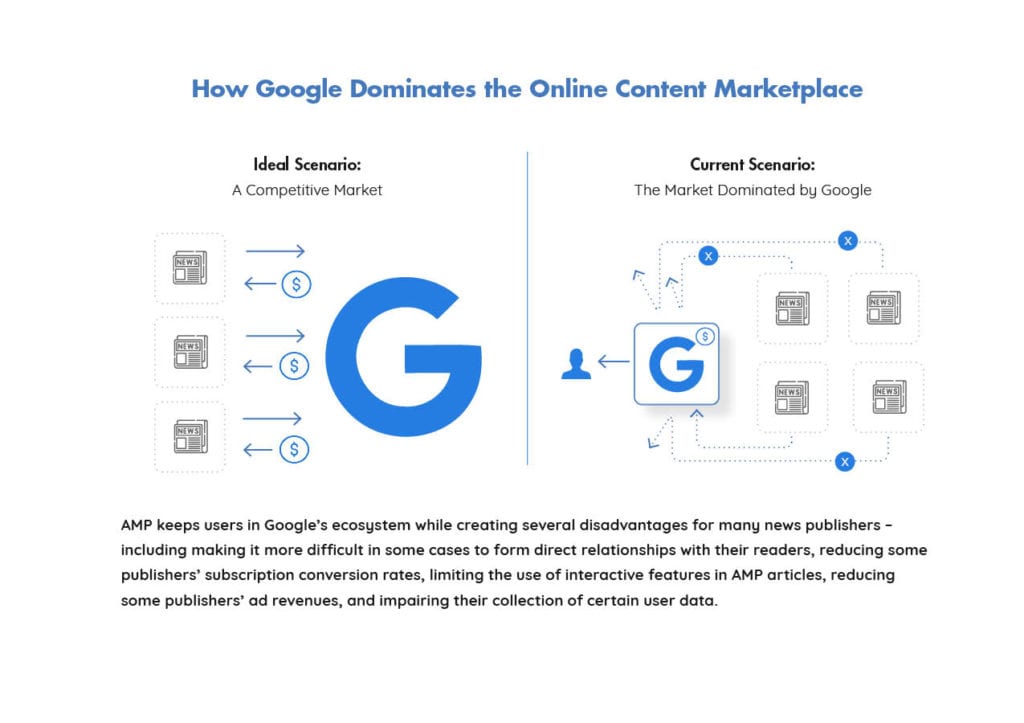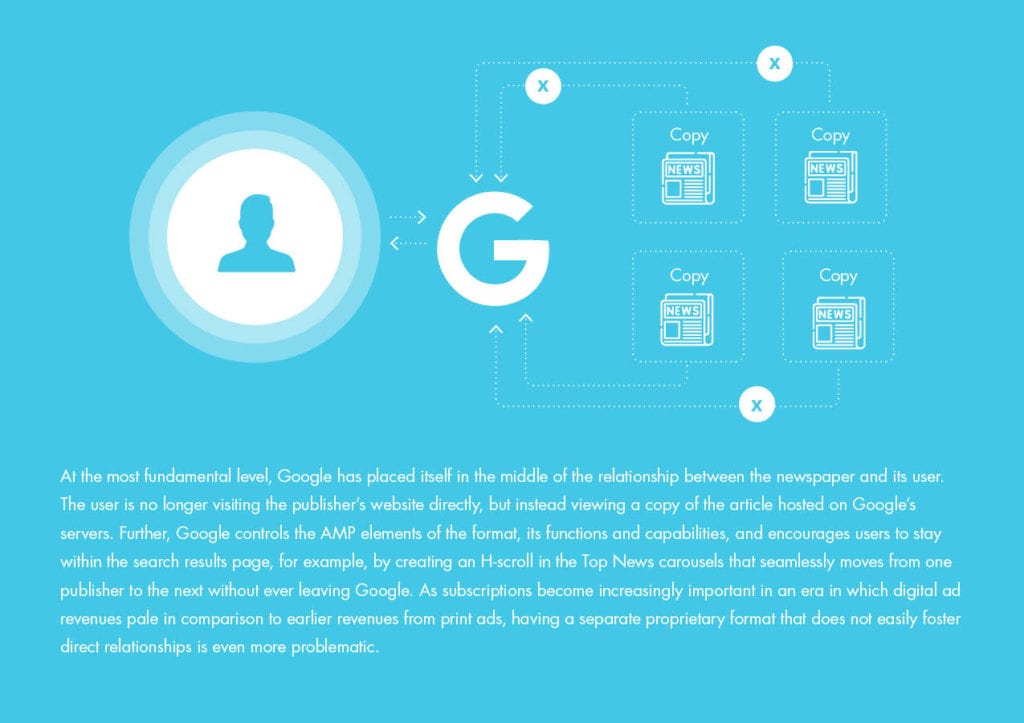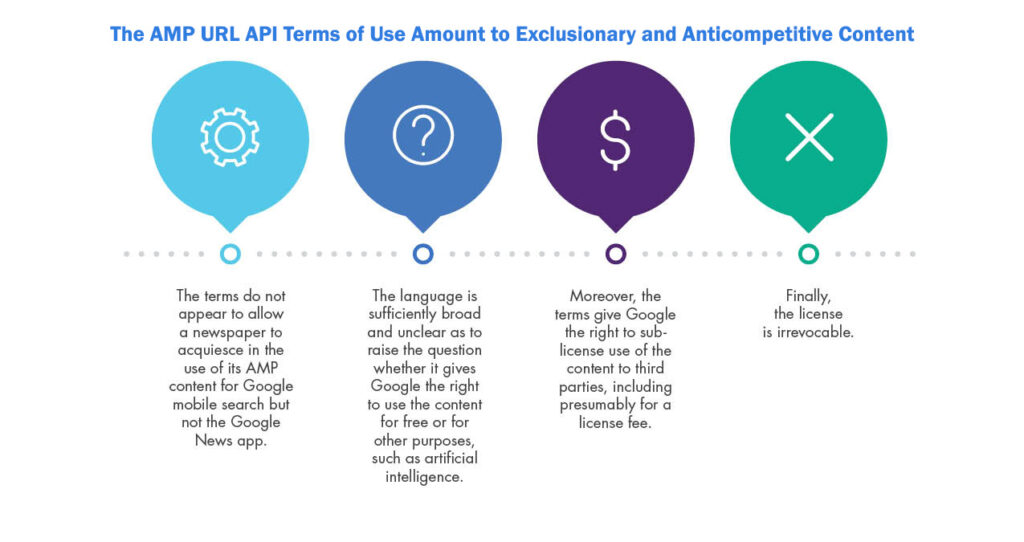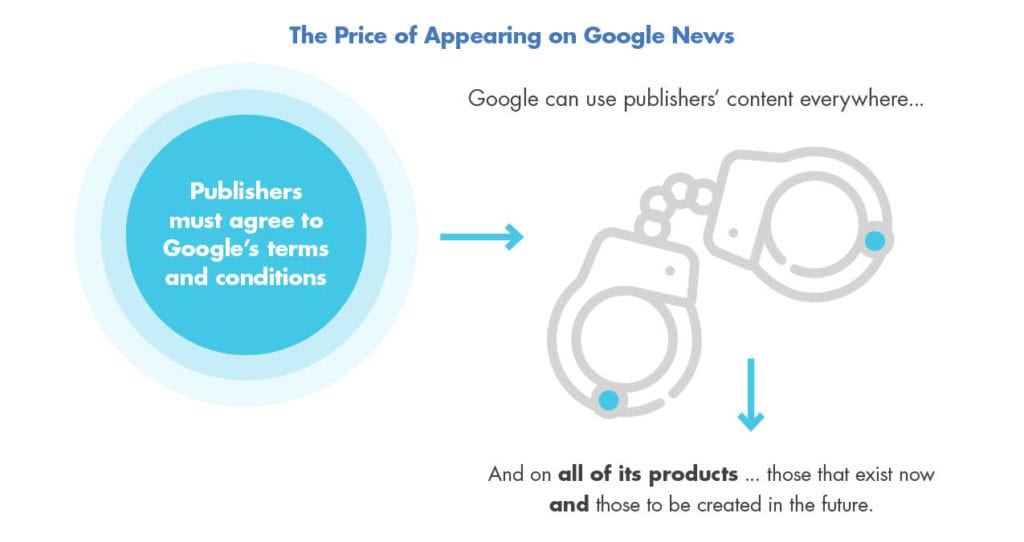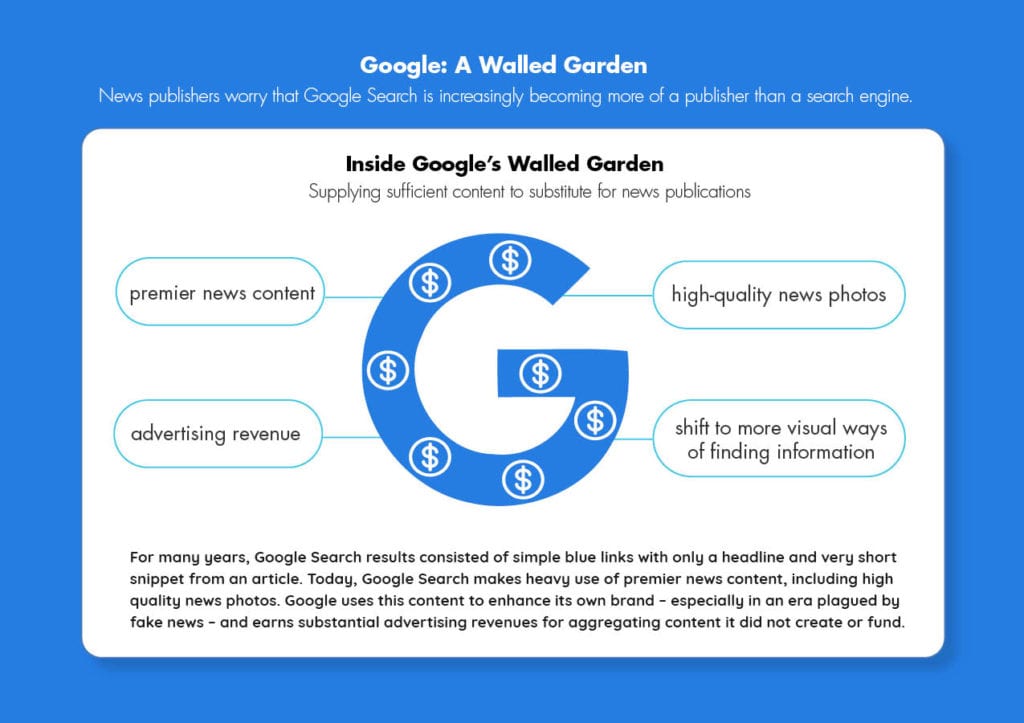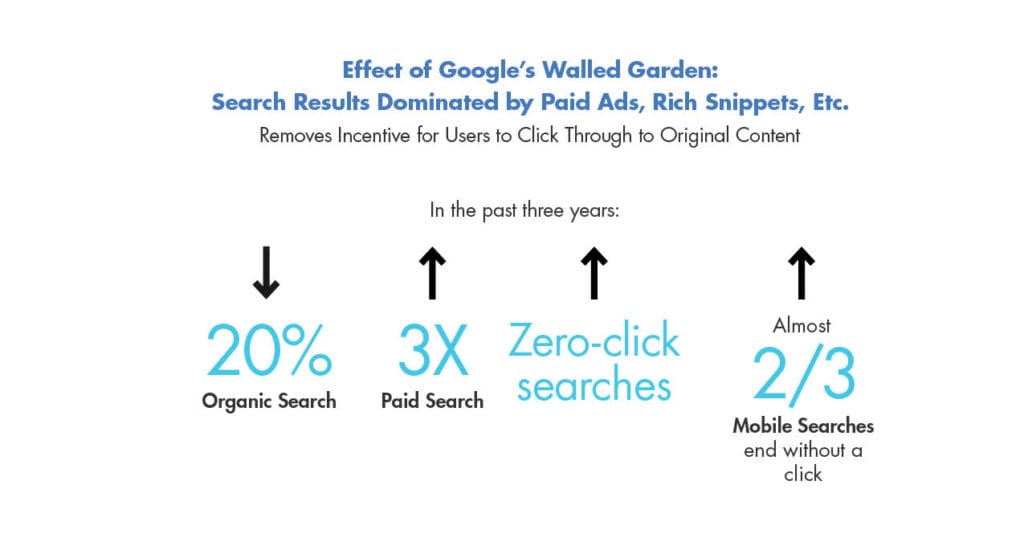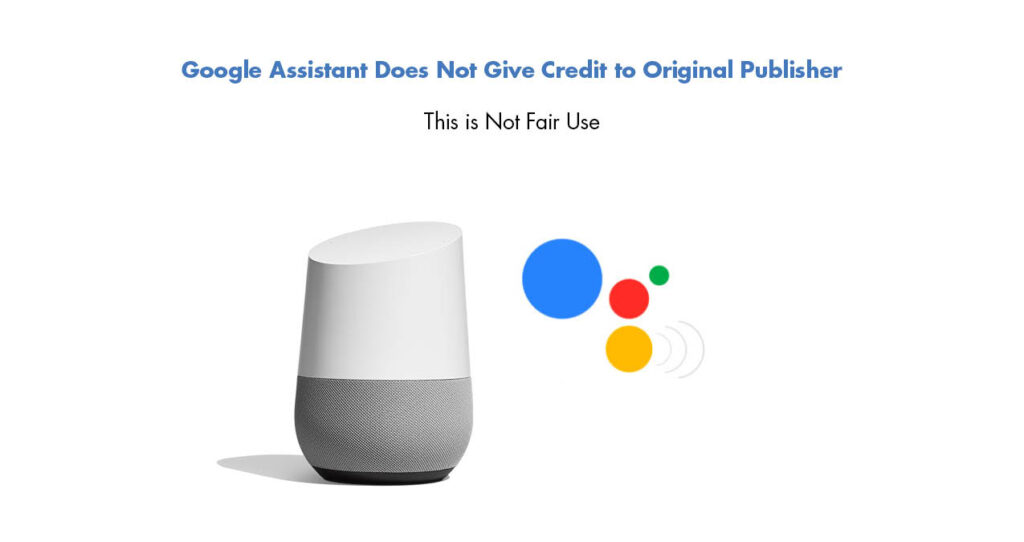
Updated September 5, 2022
The News Media Alliance has produced a White Paper, “How Google Abuses Its Position as a Market Dominant Platform to Strong-Arm News Publishers and Hurt Journalism.”
Download updated White Paper (September 2022) here.
About the White Paper
T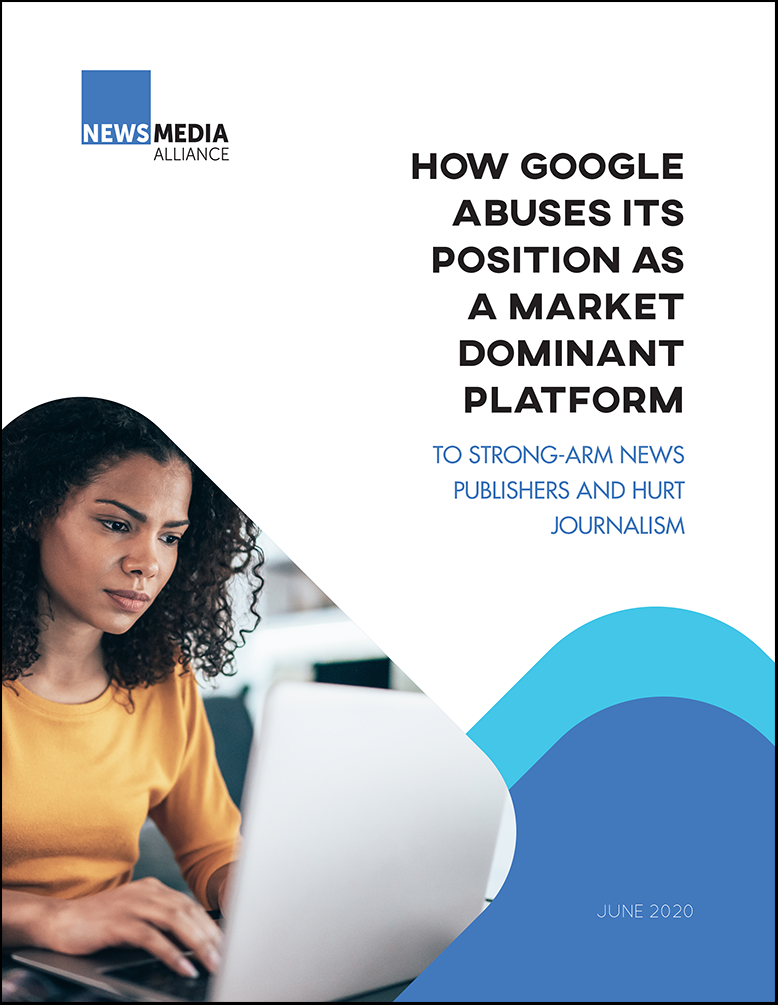 he White Paper is based on more than a year of interviews and consultations with many Alliance members about their experiences with Google products. It outlines several of the ways in which Google uses news content to its advantage across its products and services. The use of news content through AMP (Accelerated Mobile Pages), Google Discover, and the Google News app, as well as Search becoming more of a “walled garden” in which publishers and consumers are increasingly forced or encouraged to stay, has been systematically making use of news content to enhance Google’s bottom line. In exchange, because there is little bargaining power, news publishers are not receiving fair value for quality content.
he White Paper is based on more than a year of interviews and consultations with many Alliance members about their experiences with Google products. It outlines several of the ways in which Google uses news content to its advantage across its products and services. The use of news content through AMP (Accelerated Mobile Pages), Google Discover, and the Google News app, as well as Search becoming more of a “walled garden” in which publishers and consumers are increasingly forced or encouraged to stay, has been systematically making use of news content to enhance Google’s bottom line. In exchange, because there is little bargaining power, news publishers are not receiving fair value for quality content.
Based on the conclusions reached in the White Paper, recommendations from the Alliance include:
- Antitrust scrutiny through the current investigations by the DOJ and state Attorneys General and remedies that address the abuses and impacts on news publishers.
- Passage of the safe harbor bill, also known as the Journalism Competition & Preservation Act, to allow news publishers to collectively negotiate for better business arrangements with the tech platforms.
- Compensation mechanisms that properly account for the value that platforms receive through original news content provided by established news organizations.
The Alliance has submitted the White Paper to the Department of Justice (DOJ) for its investigation of Google’s anticompetitive behavior.
Resources
Click the links below to download the White Paper and related resources.
 White Paper with Graphics:
White Paper with Graphics:
This visually-friendly version of the White Paper includes seven new graphics created to help explain some of the concepts in the report.
White Paper with Graphics (PDF, June 2020)
Download and share the individual graphics from the White Paper. Corresponding text for each graphic from the White Paper is below.
For use on social media, please credit the News Media Alliance. Click on an image, then right-click and select “Save image as” to download.
PowerPoint Presentation:
Download our presentation (PDF) of the White Paper graphics for your use and sharing.
Download in PPT format (Note: Some fonts may not display properly)
Graphic 1: How Google Dominates the Online Marketplace
From page 4 of the White Paper: AMP keeps users in Google’s ecosystem while creating several disadvantages for many news publishers – including making it more difficult in some cases to form direct relationships with their readers, reducing some publishers’ subscription conversion rates, limiting the use of interactive features in AMP articles, reducing some publishers’ ad revenues, and impairing their collection of certain user data.
Graphic 2: How Google Comes Between Newspapers and Users
From page 14 of the White Paper: At the most fundamental level, Google has placed itself in the middle of the relationship between the newspaper and its user. The user is no longer visiting the publisher’s website directly, but instead viewing a copy of the article hosted on Google’s servers. Further, Google controls the AMP elements of the format, its functions and capabilities, and encourages users to stay within the search results page, for example, by creating an H-scroll in the Top News carousels that seamlessly moves from one publisher to the next without ever leaving Google. As subscriptions become increasingly important in an era in which digital ad revenues pale in comparison to earlier revenues from print ads, having a separate proprietary format that does not easily foster direct relationships is even more problematic.
Graphic 3: AMP URL API Terms
From page 19 of the White Paper (text on page 18): In our view, the AMP URL API terms of use also amount to exclusionary and anticompetitive conduct. A news publication does not appear to have the ability to acquiesce in the use of its AMP content on Google mobile search, for example, while declining permission for use in the new (and free) Google News app, which may directly compete with a newspaper’s own app or another app licensed by the publisher. Further, the language is sufficiently broad and unclear as to raise the question whether it gives Google the right to use the content for free for other purposes, such as artificial intelligence, that supposedly “improve” the APIs (and may in turn reinforce Google’s market power). Moreover, the terms give Google the right to sub-license use of the content to third parties, including presumably for a license fee. Finally, the license is irrevocable; although a news entity can theoretically stop creating AMP pages for its publication and stop using Google’s AMP URL API (with all its negative consequences), Google’s right to use the content continues indefinitely for all earlier-posted AMP pages.
Graphic 4: The Price of Appearing on Google News
From page 24 of the White Paper: News publishers are required to grant Google vast and unclear rights to use the publishers’ news content. The required grant of rights to Google extends not only to Google News but for all “Google Services” – defined as any products, services or technology developed by Google from time to time. In short, as a price of having their content appear on the regular Google News website, a publisher apparently is not only required to participate in the Google News app, and any future version of the Google News app, but any product or service developed by Google in the future.
Graphic 5: Google: A Walled Garden
From page 29 of the White Paper: For many years, Google Search results consisted of simple blue links with only a headline and very short snippet from an article. Today, Google Search makes heavy use of premier news content, including high quality news photos. Google uses this content to enhance its own brand – especially in an era plagued by fake news – and earns substantial advertising revenues for aggregating content it did not create or fund.
Graphic 6: The Effect of Google’s Walled Garden
From page 30 of the White Paper: One growing concern for the news industry is the current length of snippets from their articles, which often can collectively provide ample information on any news story to satisfy the casual reader skimming the news. Google is able to use its role as the market dominant platform to pressure newspapers into providing “rich snippets” for search. If these rich snippets are not on properly optimized pages (meaning the publisher implemented Google dictated structured data and markup properly, and the images are of requisite quality and size), the newspaper is put at competitive disadvantage. As illustrated by the examples and screenshots detailed below, a second, broader concern is the format and wide range of content presented by Google on today’s search results pages, usually above the traditional headlines and links to news articles – changes which undoubtedly decrease the chances that a user will click on a news link. Many have quoted the stunning statistic that, “In June of 2019, for the first time, a majority of all browser-based searches on Google.com resulted in zero clicks. We’ve passed a milestone in Google’s evolution from search engine to walled-garden.”38 The situation is even more stark on mobile: in the past three years, “[o]rganic has fallen by almost 20%, while paid has nearly tripled and zero-click searches are up significantly. … Today … almost two-thirds [of mobile searches ended without a click.]”39
Graphic 7: Google Assistant Does Not Give Credit to Original Publisher
From page 36 of the White Paper: Google Assistant is but one of the growing “Voice-first” Google platforms. The Google website states that, “If you search with the Google Assistant, featured snippets may also be read aloud.”42 The full extent of this practice is not known, but in a limited review the news publishers have certainly found examples. When Google Assistant provides an audio response, that audio response obviously does not contain any link to the original article. In short, in that setting, the quid pro quo that supports any fair use defense is absent.
Additional Resources:
Plain White Paper (no graphics) (PDF, September 2022)
Alliance Letter to the Department of Justice (June 18, 2020)
Statement: White Paper Shows Google’s Ongoing Use and Abuse of News Content, Why We Need the Journalism Competition & Preservation Act (September 6, 2022)
Press Release: Alliance Releases New White Paper Outlining Google’s Dominant Market Behavior, Harming of Journalism (June 18, 2020)
For more information:
Please contact Alliance Communications Director Sam Quigley if you have any questions.

